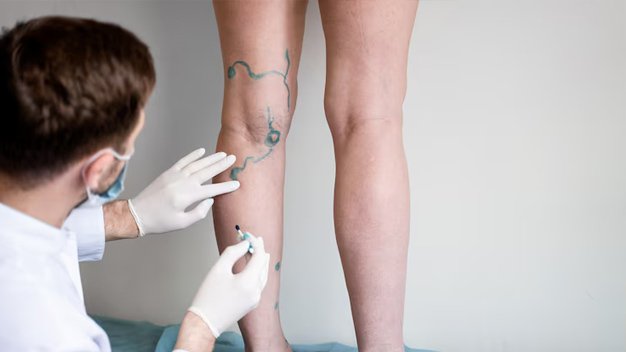
If you are suffering from Varicose veins, then you have certainly landed on the right page. We are here to help you understand every single aspect about it right from diagnosis to recovery.
When it comes to Varicose veins, these are enlarged and bulging veins. It often become painful and can lead to cosmetic concerns. Let’s get started and understand how we can proceed ahead with its diagnosis and treatment to recover from it fully.
How To Start With Varicose Veins Diagnosis?Accurate diagnosis begins with identifying the problem areas and determining severity. The doctor will examine the legs and look for swollen, twisted veins raised above the skin surface. They may get your medical history and ask about risk factors like heredity, pregnancy, prolonged standing, etc. Diagnostic tools such as ultrasound imaging help determine the inner vein structure and health. This allows tailoring the most suitable varicose veins treatment.
What Comes with Conservative Varicose Veins Treatment?Mild cases can sometimes be managed conservatively through lifestyle modifications and compression stockings that apply gentle pressure. These include elevating your legs, exercising to get blood flowing, maintaining a healthy weight, and limiting standing times. Compression stockings help push blood upwards for those in occupations requiring long periods on their feet.
Radiofrequency Ablation (RFA)This minimally invasive method uses heat energy from radiofrequency waves to seal varicose veins without scarring. A thin catheter is inserted through a tiny incision and advanced into the vein. The heat damages vein lining, producing collagen that blocks blood flow over 6-8 weeks as it heals. Multiple veins can be treated in a single session.
SclerotherapyFor smaller surface varicose veins, sclerotherapy involves injecting an irritating fluid like saline or non-foaming detergent to trigger inflammation and scarring. This obliterates the treated vein. Multiple injections may be needed at intervals of 3-4 weeks depending on vein size. Results are effective though touch-ups may be required in some cases.
Surgical Varicose Veins TreatmentFor large, severe varicosities, saphenous vein stripping may be needed. It removes the affected surface vein from groin to ankle using small incisions. Phlebectomy can extract varicose side branches via punctures. General anesthesia is administered and patients stay overnight or two for surgical varicose veins treatment.
Endovenous Laser Ablation (EVLA)This advanced treatment uses laser energy transmitted through a fiberoptic probe to close veins. The procedure time is shorter than RFA, but both achieve similar outcomes with less pain and faster recovery than traditional vein stripping.
How is Recovery from Varicose Veins Treatment?Recovery timeframes vary depending upon the procedure undertaken. For sclerotherapy, light activity can resume immediately with possible bruising lasting 1-2 weeks. Minor ache, swelling, and temporary skin discoloration are standard post RFA/EVLA and subsiding within 2 weeks allows return to routine. Stripping involves 2-4 weeks of leg elevation, compression garments for 4-6 weeks and full recovery by 6-8 weeks with visible scarring. But all options provide relief from pain and visible improvement for optimal varicose veins treatment results.
Final ThoughtsVaricose veins degrade wellbeing and looks requiring effective yet minimally invasive management. After diagnosis, determining the right treatment involves weighing options, risks, and individual lifestyle. Procedures like RFA and EVLA deliver long-term comfort with less downtime than earlier methods. For best varicose veins treatment, consider Deepasri Hospital – a state-of-the-art facility offering the latest techniques, expert care, and high success rates.

